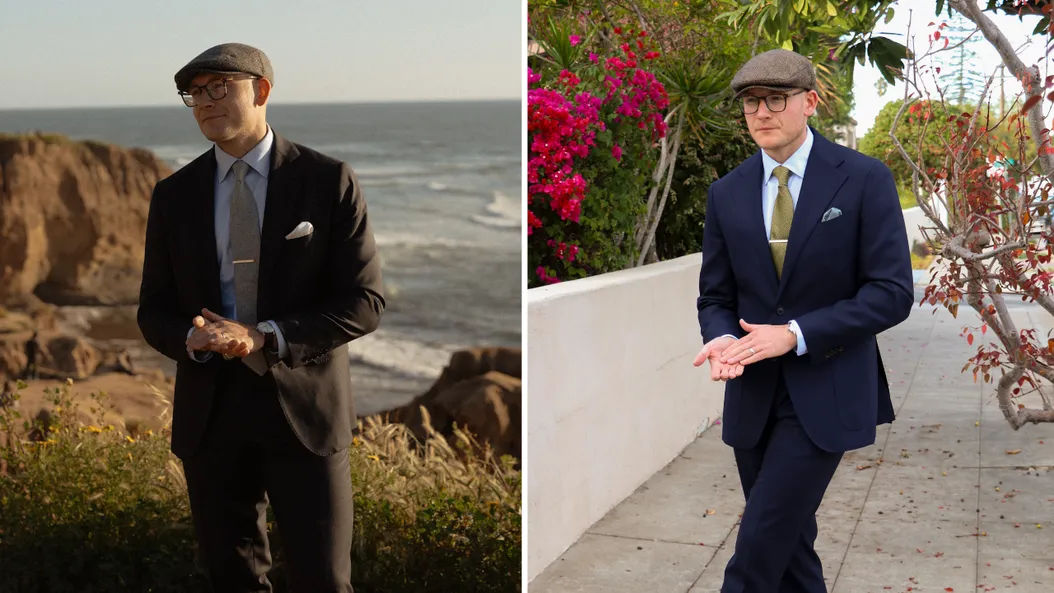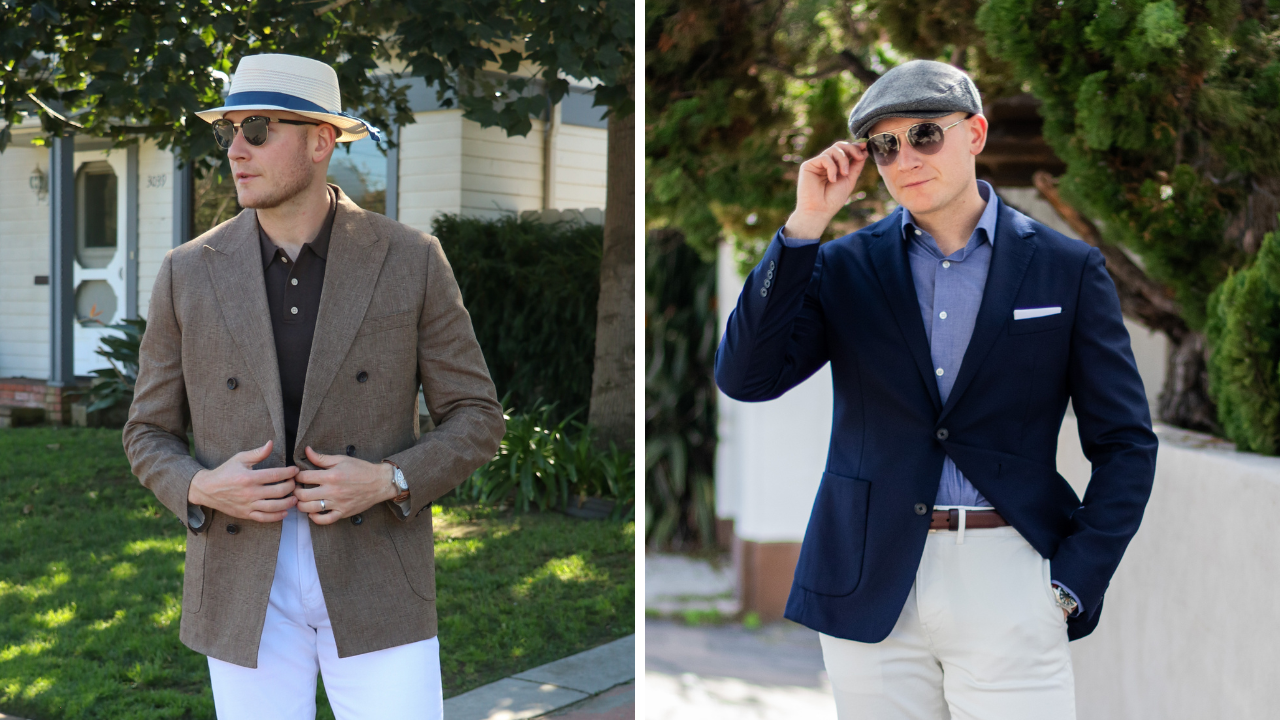
One of menswear's most confusing and frustrating topics is the difference between blazers and sport coats.
Despite their technical distinctions, blazers and sport coats are often conflated. In fact, many contemporary brands market their products in a way that misleads their customers, which certainly complicates matters.
Although this topic may seem pretentious, it's important to grasp the differences between these classic menswear pieces to look your best while dressing appropriately for any occasion.
By the end of this short guide, you'll understand the key differences between these two jacket types, when and how to wear them best, and become better aware of common mistakes to avoid.
The Blazer
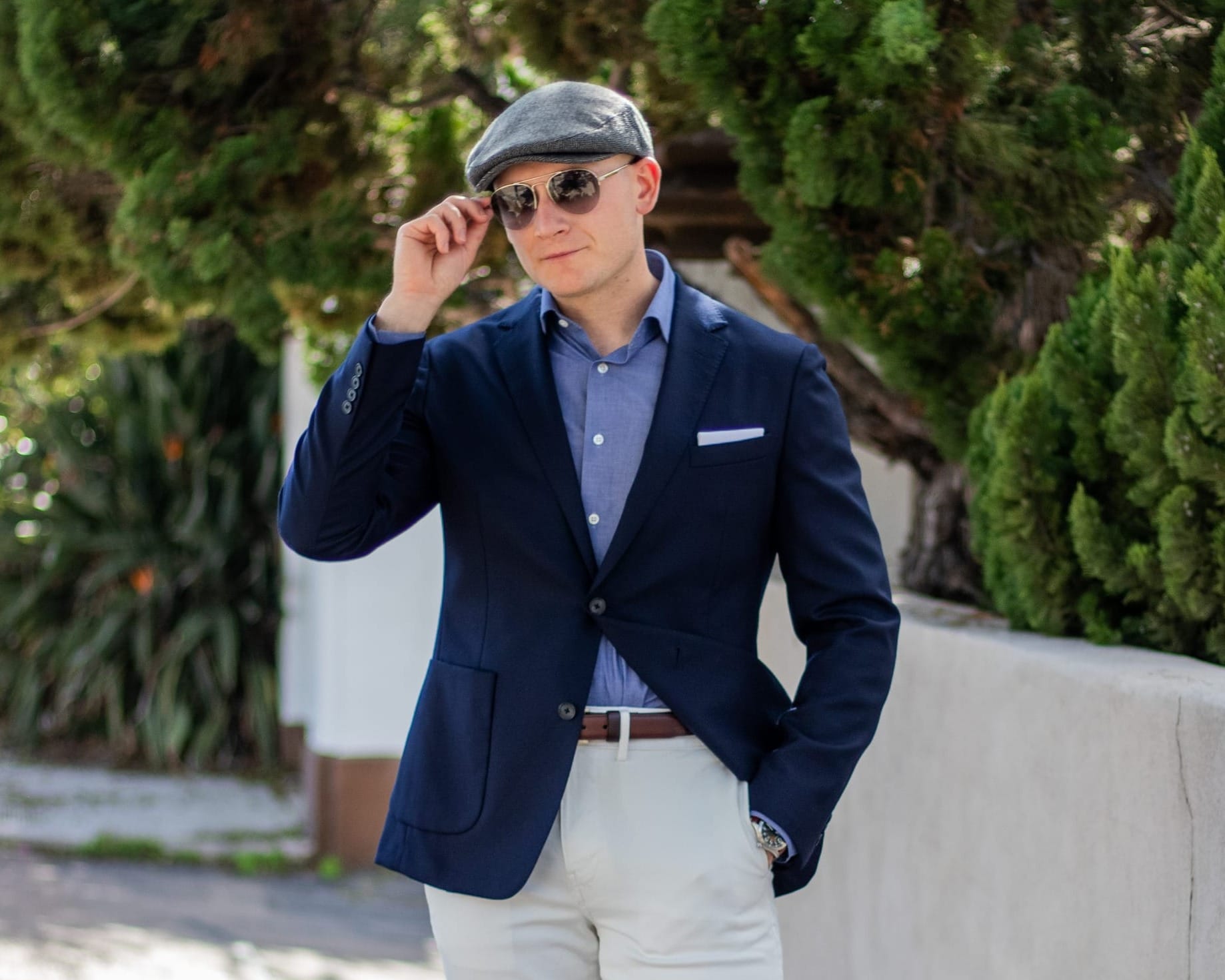
A blazer is the most specific garment in that it technically must meet a particular set of criteria. Before understanding what qualifies as a blazer, we need to understand a little about its history.
A Quick History
The blazer's precise origin has been somewhat lost to time; however, the garment can be traced back to a variety of organizations:
- The boating team of St. John's College in Cambridge, England, during the late 1800s.
- The HMS Blazer, whose captain had his men wear navy-blue, double-breasted jackets with bright brass buttons for when Queen Victoria would visit around 1837.
Perhaps the most notable origin of the blazer garment is the Lady Margaret Boating Club of St. John's College in Cambridge, England. Founded in 1825, the club is often credited with kickstarting the jacket's initial popularity sometime during the late 1800s.
Each of the club members was described as wearing bright red flannel jackets that were said to be "ablaze. " Thus, the rowing regatta blazer was born, and a stylish menswear staple meant to stand out and be seen.
Blazer Definition
A blazer is oftentimes (but not always) somewhere between a suit jacket and a sport coat.
A blazer is a standalone piece with characteristics similar to those of a typical suit, such as padded shoulders and canvas construction (though they can also be unstructured).
However, a blazer is fundamentally different because it does not come with matching trousers. It typically has contrasting buttons (much like the men serving aboard the HMS Blazer back in the day) and additional features that often (but not always) make it more casual.
It is important to note that a jacket that meets all the previously mentioned criteria and a matching pair of trousers made from the same fabric, colors, and patterns would be considered a suit (more on this in a bit).
Materials & Patterns
Blazers can be made of materials such as flannel, hopsack, etc. Traditional suits are typically made from worsted wool, a tightly woven, smoother fabric often reserved for more formal attire due to its shinier visage.
Flannel, which comes from wool or cotton, is constructed differently, is much softer, and is considered more casual.
Hopsack is a type of four-season weave made from wool or wool-cotton blends. It is characterized by its basket-like construction and superior breathability compared to flannel. Due to this particular weave, hopsack features a more noticeable texture.
Blazers can be made in various patterns, but in the purest sense, they have fewer pattern options than sport coats. They can be solid colors (most notably navy blue), striped, or even solid colors with contrasting piping along the edges.
In the past, many blazers had some ornamentation, such as a crest, but few are left outside private institutions.
When to Wear a Blazer
As previously mentioned, blazers are less formal than suits but still formal enough to be worn for specific occasions that warrant dressier clothes, such as networking events, business settings, dates, and even weddings (depending on the type of wedding).
A navy blazer can be worn in various ways, from ultra-casual to formal wedding attire!
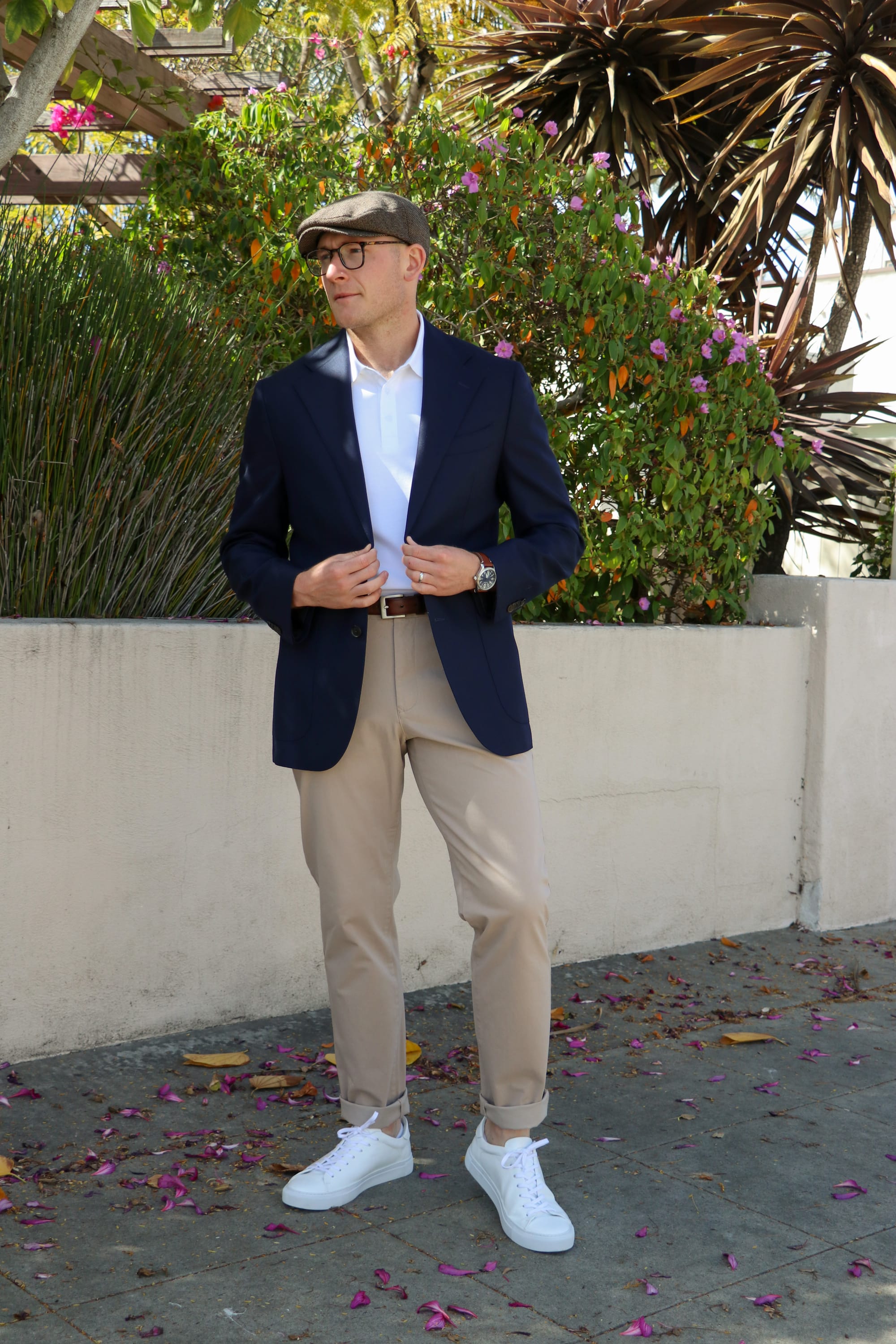
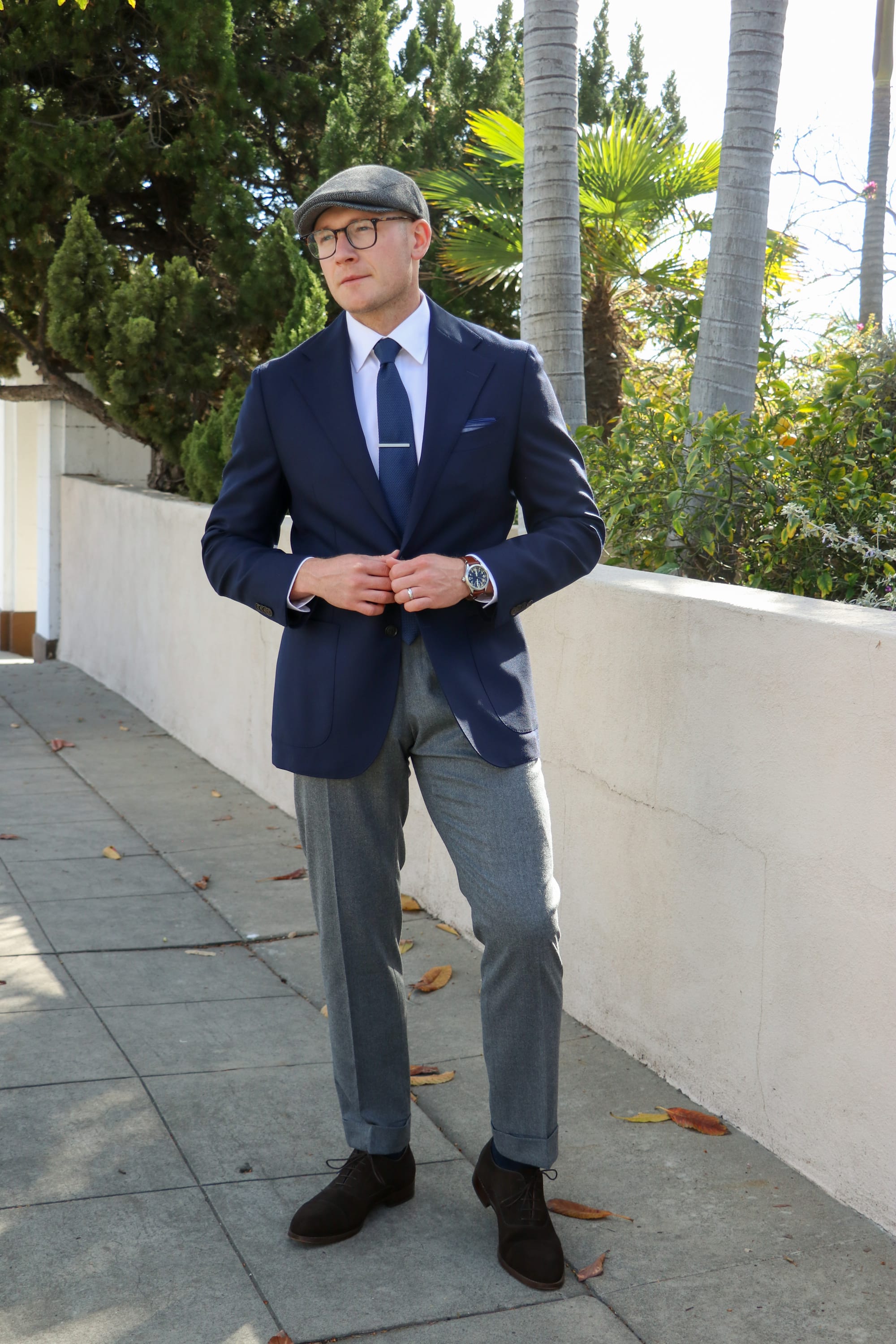
The Sport Coat

Sport Coat Definition
The sport coat (a.k.a. sport jacket) is considered more casual than a blazer and is also a standalone piece. They vary in color, material, and pattern (more so than blazers) and can be dressed up or down depending on the color and fabrics.
History of the Sport Coat
Unlike the blazer, however, the sport coat has a reasonably concise history. All you need to know is that men traditionally wore this garment while sporting, hunting, or fishing in the countryside, hence the name.
Materials & Patterns
Like blazers, sport coats can be made from wool, cashmere, cotton, flannel, etc. A particularly sharp and classic material for sport coats is tweed, which is reasonably rugged and hardy. However, the patterns and designs make the sport coat fundamentally different from a blazer.
Sport coats can have stripes, herringbone, windowpane, checked, or houndstooth patterns, among other patterns.
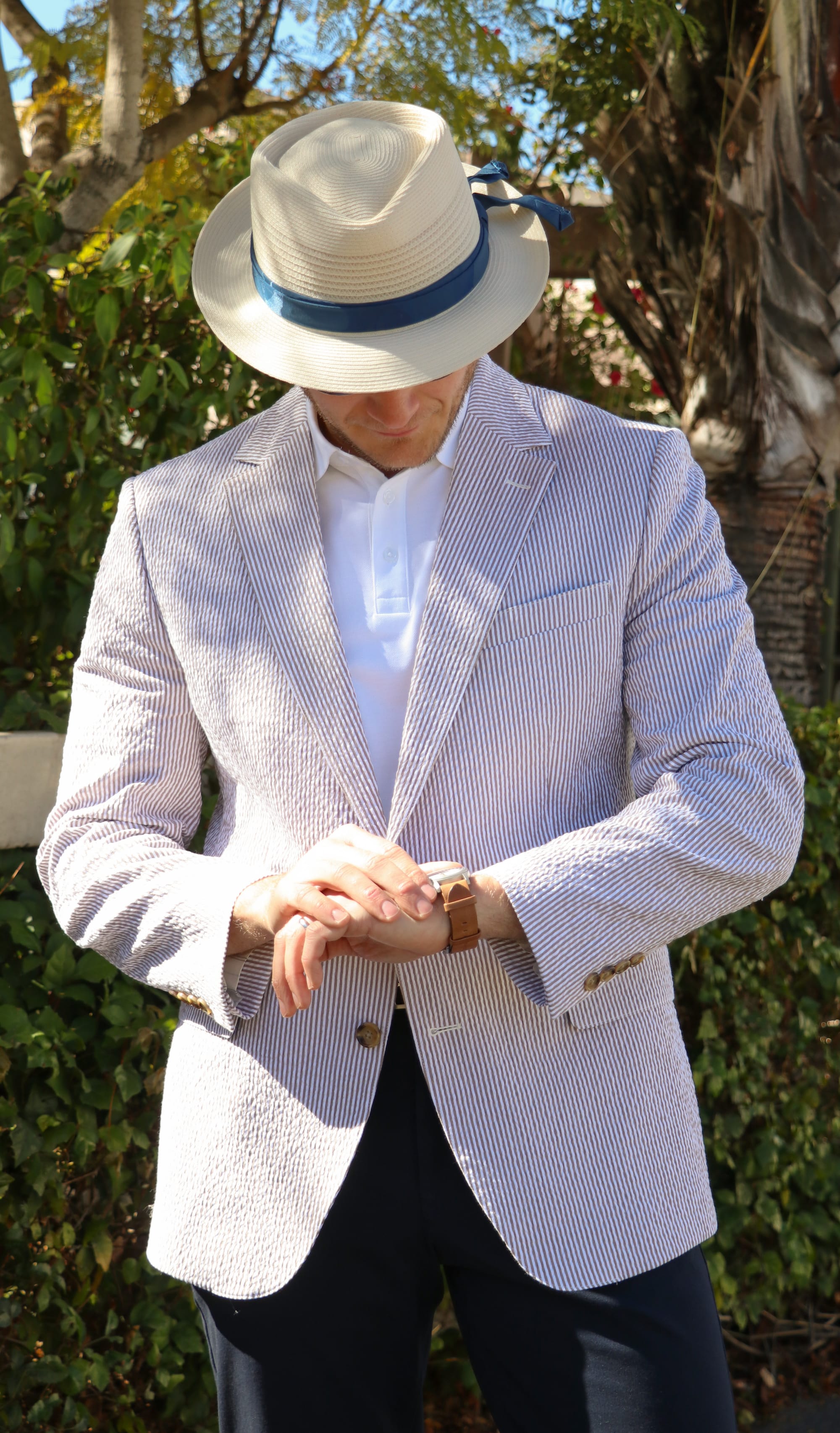
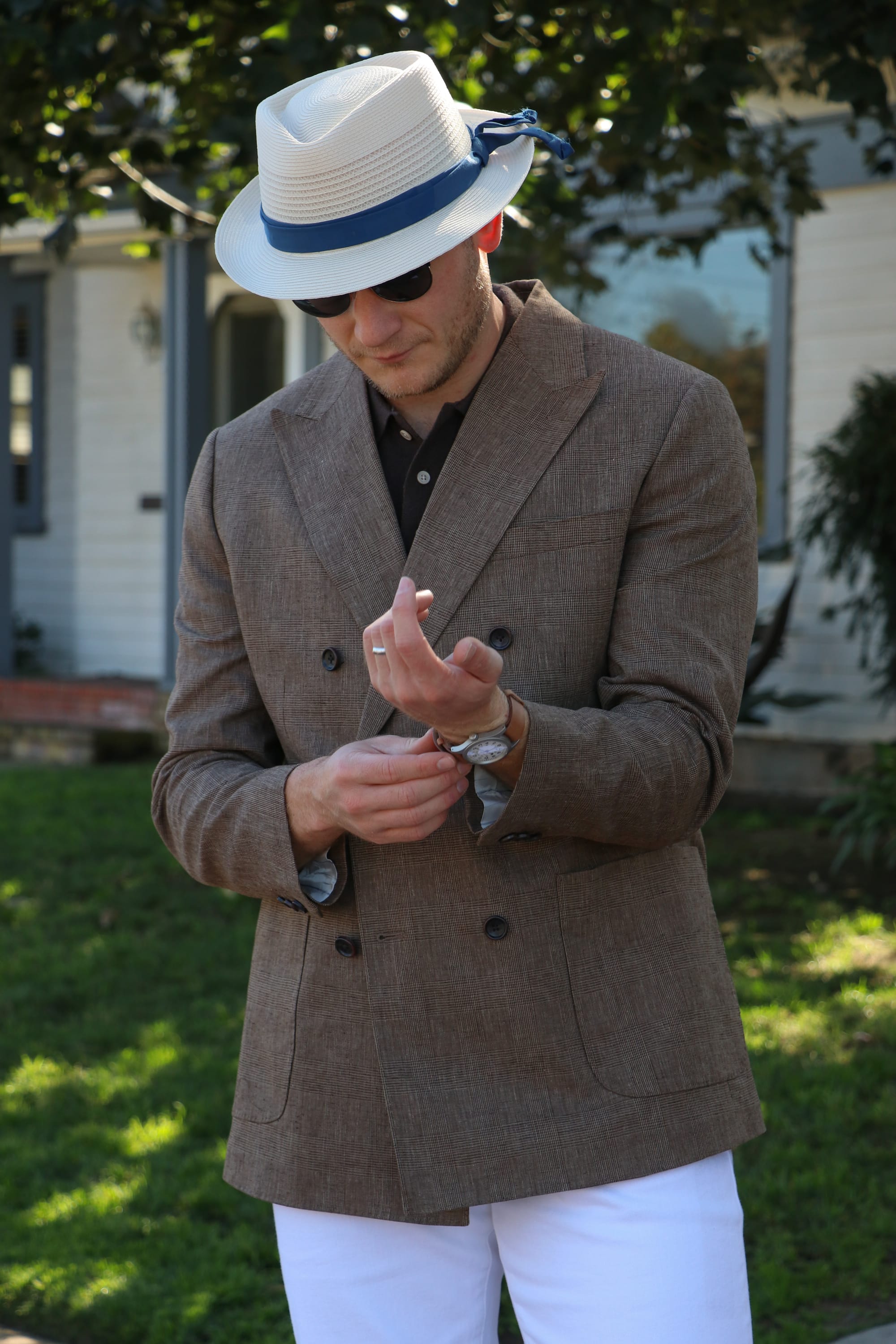
Sport coats often have patched pockets and can be lined or unlined with no canvassing, further elevating their casual nature.
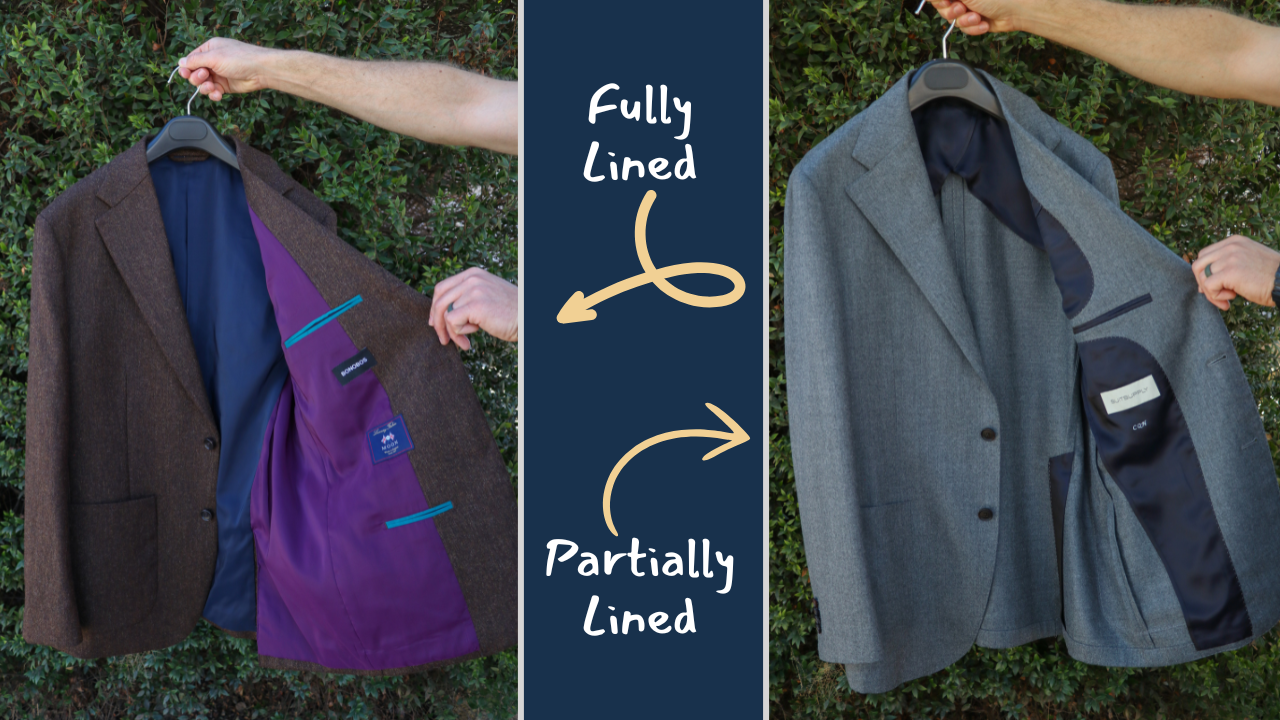
When to Wear a Sport Coat
The sport coat is perfect for looking polished without being overly formal. It's an excellent choice for dates, reunions, outings with friends, or casual parties, making it the ultimate casual jacket for any gentleman who wants to be the best-dressed man in the room without looking like he's trying too hard (even if he secretly is).
What About a Suit Coat/Jacket?
A suit is formally defined as a garment consisting of a jacket and matching trousers, both of which coordinate in fabric, pattern, and color.
Suit Jacket Materials
Men's suits can be made from various fabrics; however, most suits are constructed from worsted wool, a lighter, stronger, finely woven wool that often gives the material a distinct "sheen."
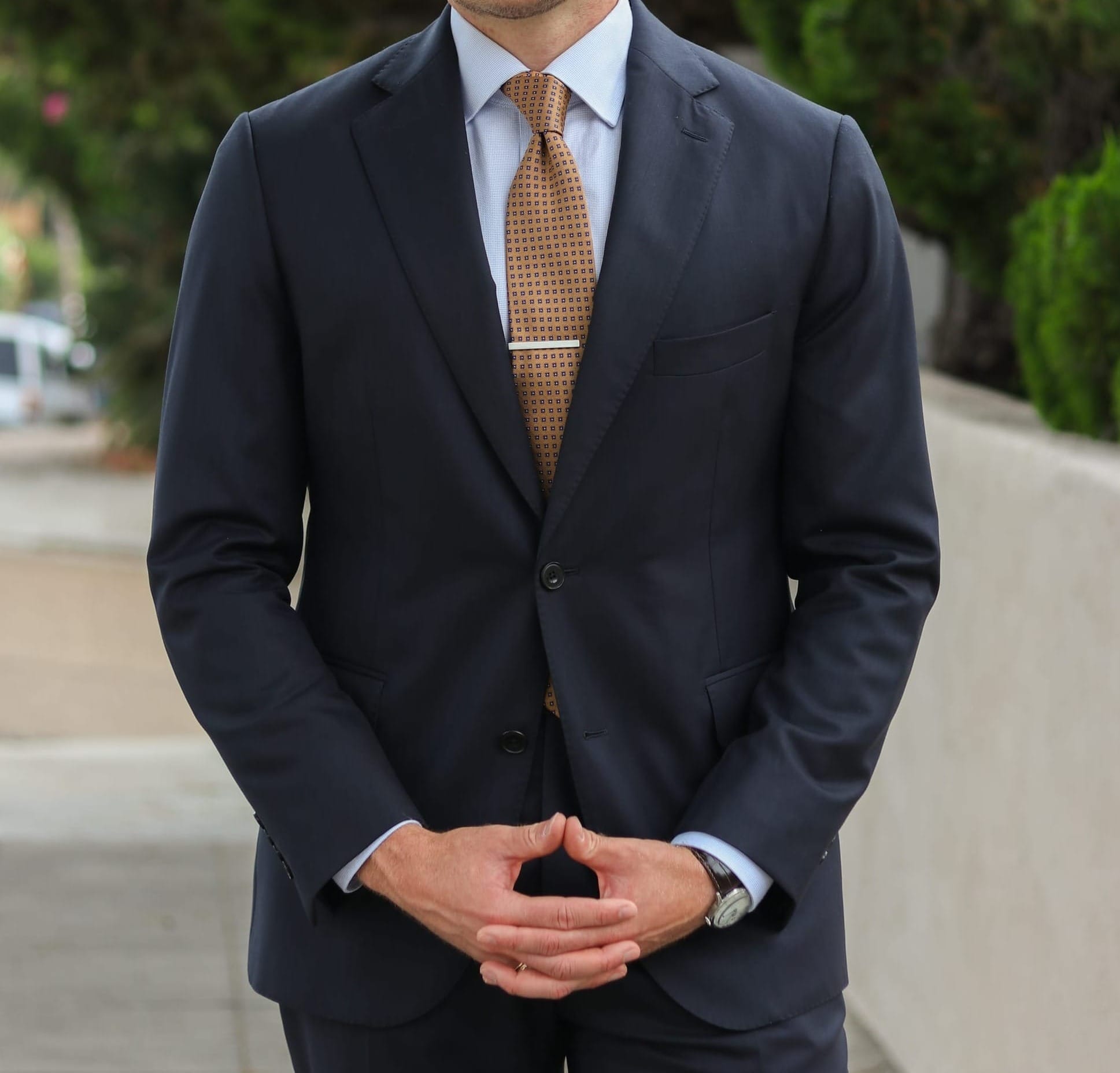
Suits are typically more structured and may feature a full—or half-canvassed lining and shoulder padding, which often enhances their formality.
However, it's important to note that suits and suit jackets can also be unlined and unstructured. It really just depends on where you buy them or how you choose to build them if you're having them made custom.
Many suits may feature casual qualities like patch pockets, minimal lining, padding, canvassing, and textured fabrics. Again, what truly defines a suit is its matching pants and jacket.
Can You Wear a Suit Jacket as a Blazer?
Some traditionalists will answer "no," but really, it depends.
If your jacket fabric of choice is worsted wool, which has a noticeable sheen typical of most suits, I recommend not wearing it as a blazer.
It can give the impression that you're trying too hard to do more with an orphaned suit jacket than necessary by mixing overly formal pieces with super casual ones, which isn't visually appealing (trust me).
However, suppose the suit jacket has an intricate pattern, and the wool is a hopsack weave or something with an apparent texture; in that case, the nature of the suit jacket is already a little more casual than worsted wool (resembling a classic navy blazer), and therefore you could very well pull it off.
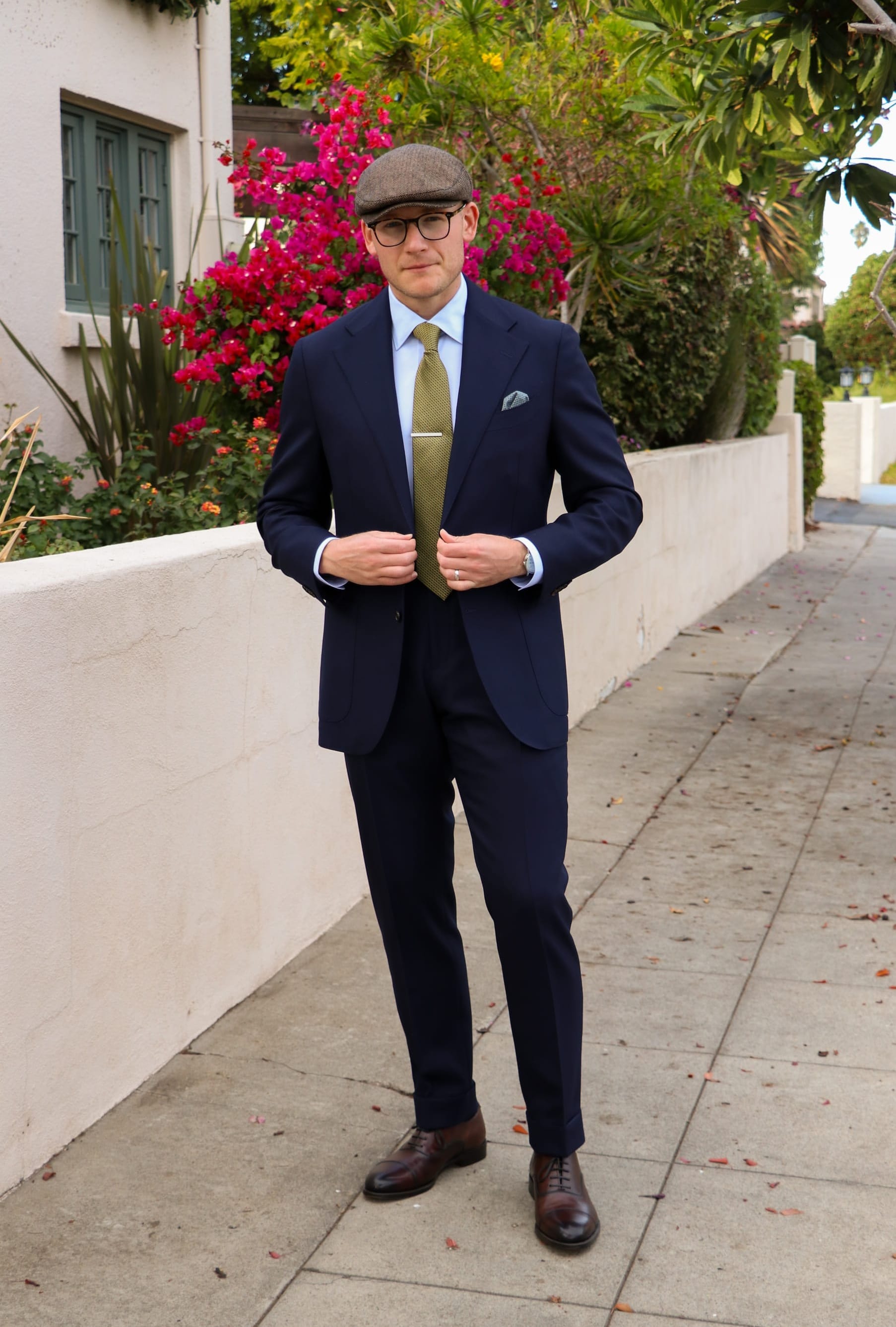
This full suit (featured above) is single-breasted with patch pockets, woven from hopsack wool, has a less structured design, and is a true navy blue.
This suit is one of the best business suits a man can own because it offers a formal appearance with casual elegance. The matching pants function as a handsome and versatile pair of odd trousers that can be worn independently.
Can You Wear a Blazer or Sport Coat as a Suit Jacket?
Maybe, but only if the trousers match the blazer in fabric, pattern, and color. Again, this would be a suit by definition because of that alone.
In fact, many stylishly savvy individuals buy suits and select fabrics that allow them to break the jacket and trousers up to allow for additional sport coat and odd-trouser options.
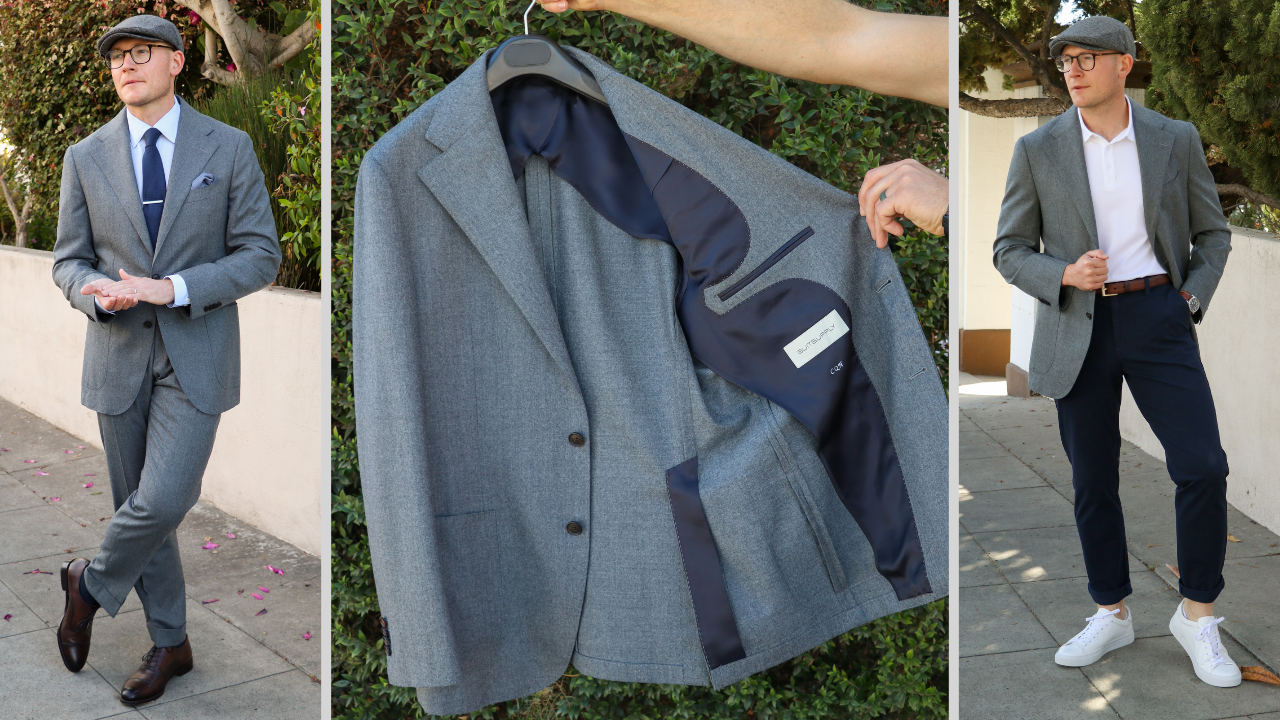
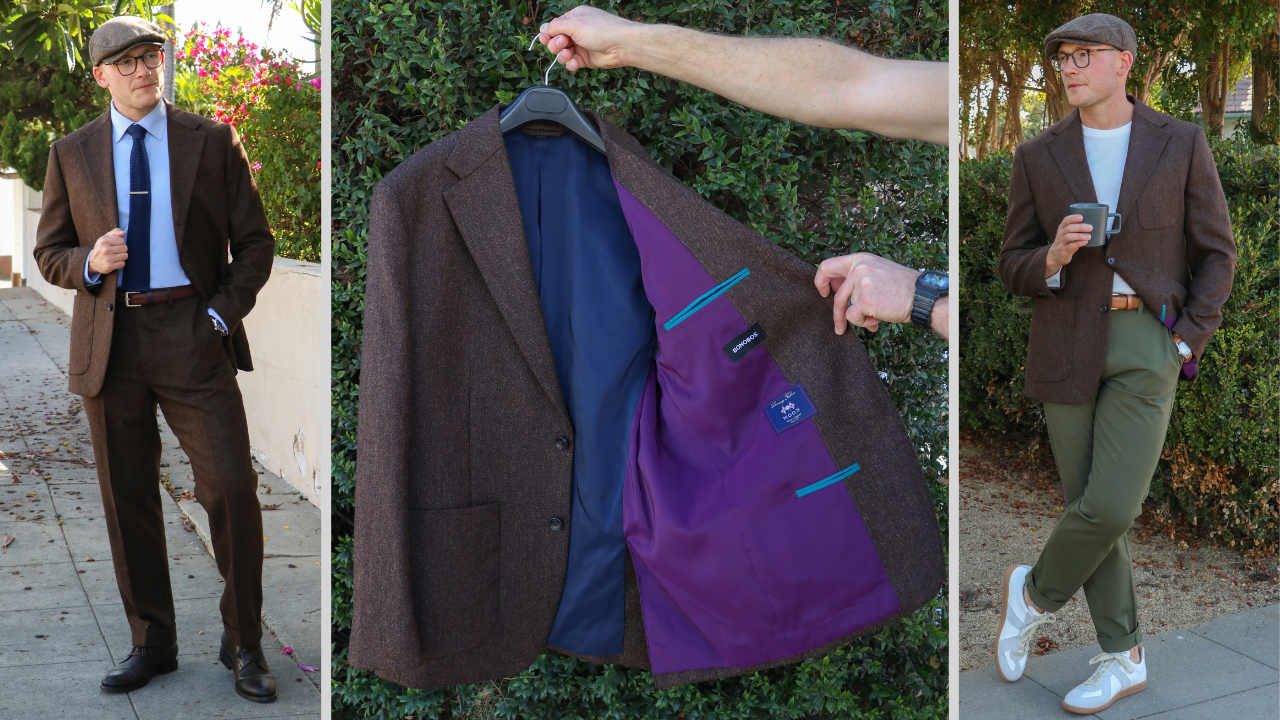
The Eyes Are Drawn to Contrast...
Suppose you were to take a hopsack navy blue blazer and pair it with navy cotton-twill chinos or dress pants.
In that case, the subtle differences in the weave and color will appear slightly mismatched, making it seem as though you are attempting to create a suit. This disrupts the harmony and consistency of the ensemble, which could make you look silly (so avoid that route).
If you believe these subtle details (like fabric) won't catch an average person's eye, think again. Our eyes are naturally drawn to contrast.
Even if those around you can't pinpoint what's off about the look you've created, the general impression they’ll have of you won't align with that of a modern gentleman who has his act together.
Don't Overthink It
Much of what I have just described isn't all that important. Arguing about specific terminology like this can be truly snobbish (depending on who you're talking to).
What matters is that we understand the differences between these jackets so that we can ultimately dress well for the right occasions and find the garments that resonate with us and complement our tastes.
After all, knowledge is power. As long as the decisions you make are tasteful and in the spirit of good style, you'll find that there is often little to be worried about.

